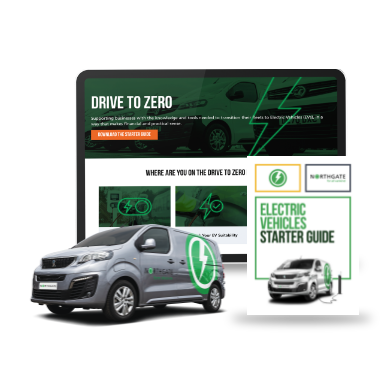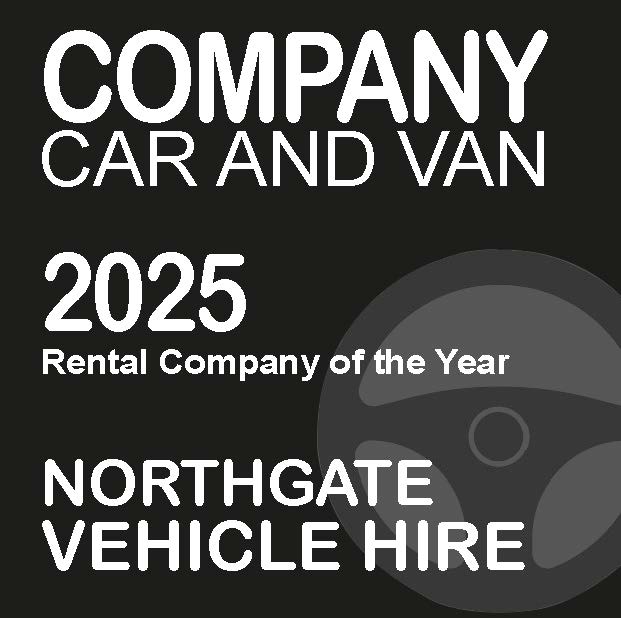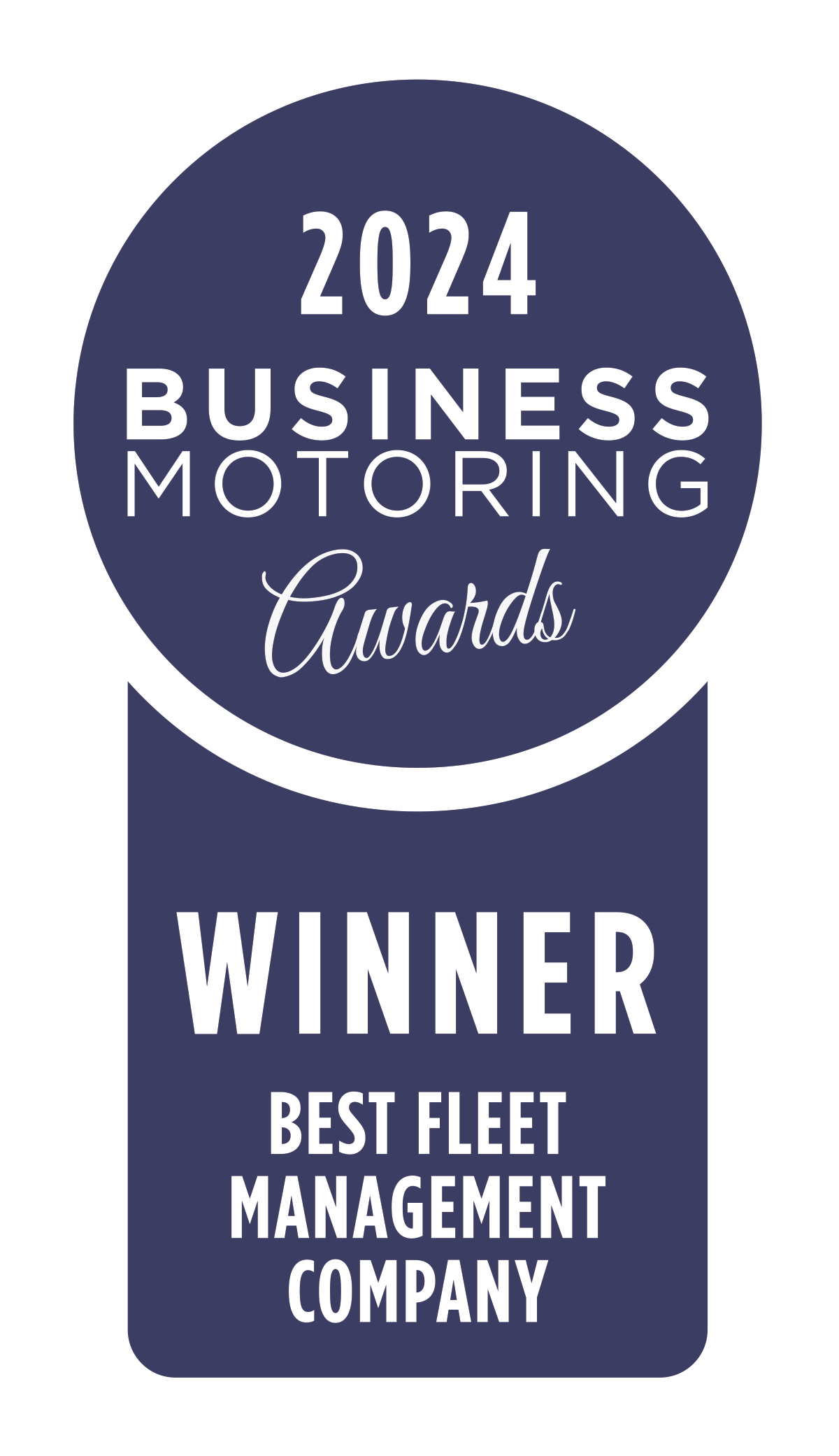Top EV charging infrastructure considerations for businesses
![]() 14/12/2021
14/12/2021![]() 12 minutes read
12 minutes read
Every business will have varying EV charging infrastructure requirements. However, there are a few key considerations that can make any switch go smoother and help you get the most out of your investment.
We’ve teamed up with our EV charging colleagues, ChargedEV, to answer everything you need to know on going green.
Here’s your guide on finding the right charging infrastructure solution for your commercial vehicle needs.
Key EV infrastructure questions to consider
1. What vehicles will you be charging?
Knowing what vehicles will be charged can help you decide which type of charger to choose. The main choice usually comes down to the difference between universal sockets vs tethered.
Tethered chargers are equipped with a cable, but because of this, they will only work with certain vehicles. Universal sockets require you to attach a suitable cable for your vehicle and are generally preferred for workplace or fleet charging, as they then can be used for all vehicles. With EVs, carrying a cable in the vehicle is expected to be commonplace.
2. Where will the vehicles be charged?
The most suitable charging options often depend on how your vehicles are used, the routes they operate on and your drivers. There are a few main options.
Home
If your team typically take their vehicles home and can install a charger or have access to one, this can be a viable option.
Depot or workplace
If vehicles will be sat idle for long periods or left overnight on-site, charging EVs at your depot or workplace can be a good option. This is also dependent on having the necessary permissions to install chargers at your site and access to sufficient power.
Public
There are a growing number of fuel stations, streets, and car parks with access to chargers that can be used to top up EVs. Zap Maps provide a helpful resource for finding chargers near you.

The pros and cons of the common charging locations.
3. Who will the EV chargers be used by?
You may decide to make the chargers available to employees or visitors for their personal vehicles or just your fleet.
If your site is easily accessible, you may decide to make the chargers available to the public. For some businesses, this might even entice customers to your locations.
Depending on the chargers and systems you choose, you may even decide to charge certain users a fee for using your chargers. For example, chargers can be set up so that visitors must pay while staff and fleet vehicles get free access. Providing free access to staff can be a great employee perk.
4. Do you need to control who uses the chargers and monitor usage?
Management systems can be set up with some chargers to give you the ability to create your own tariffs, control access with RFID cards, monitor charging usage, track staff members’ charging, and more.
This means you can set up chargers to see how much energy was used and by whom – you can also control who has access to use the chargers. If needed, you can choose a system with the ability to provide in-depth analytics on how they are used.
If you opt to install chargers at your employees’ homes, management systems can also be a useful way to get an accurate view of expenses to be claimed – it can even be broken down on an individual vehicle basis, so crossover between costs for charging personal and fleet vehicles can be better prevented.
5. How are your vehicles used?
How your vehicles are used, their typical routes and their daily routine could be big factors in deciding the speed of charger you need.
Generally, the quicker the charger, the more expensive they are. There is no need to incur the extra cost of, let’s say, a rapid charger, unless the demands of your job call for this.
For example, a 7kW charger is perfect for vehicles left overnight or those that will be sat idle for long periods of time, whilst a fast charger of 22kW might be better for vehicles that you need back out on the road more quickly.
6. Do you have permission to install the chargers?
If you are leasing your premises, you will likely need permission from the landlord to install EV charge points.
Next, you will need suitable off-street parking like a parking lot or driveway. If you will be relying on on-street chargers, you will need to liaise with your local council to see if installing a charger is possible.
7. Have you checked to see if you can claim any grants or tax relief?
Making the switch can be made more financially viable with the various government grants and tax relief schemes. Two of the main schemes currently available (November 2021) that can apply to businesses are:
OZEV WCS
The Office for Zero Emission Vehicles Workplace Charging Scheme (OZEV WCS) grant is available until 31st March 2022 to many businesses across the private and public sectors.
If your chargers are intended for the staff or fleet use only, you may be eligible to save £350 per socket installed at your workplace up to £14,000. It is worth noting that the grant provides support towards the upfront costs of the purchase and installation of EV chargers, and this means they can’t be claimed retrospectively.
You can apply for the vouchers and find further details around eligibility via the government website.
The ‘Electric Vehicle Homecharge Scheme’ (EV HS)
This currently provides a grant of up to 75% of the cost towards installing a 7kW electric charge point which is capped at £350 per charge point. The current scheme is currently planned to end from 1st April 2022. At present, the scheme allows for two charge points to be installed at the same property providing both vehicles qualify. Further details are available on the government website.
Steps involved in switching to EVs
Benchmarking current fuel costs and vehicle usage
Tracking the costs of fuelling your vehicles can help you work out the potential fuel savings of EVs. Monitoring vehicle usage via telematics can further assist you in identifying the cost-effectiveness and suitability of EVs.
If you find that there’s an EV option with suitable driving range and payload capabilities, the running and refuelling costs of EVs can work out far cheaper than ICE vehicles.
Typically, the upfront costs of switching to EVs and installing charging infrastructure are far more justifiable when considering long-term savings in the total cost of using an EV over its life.
ℹ Hiring with Northgate can give you the ability to trial or adopt EVs on your fleet without the significant investment and commitment of traditional acquisition methods, such as purchasing and leasing. > Learn more
Deciding between different types of chargers
One big difference between chargers is speed and their power delivery.
Whilst rapid chargers are more often found in fuel stations or supermarkets, fast chargers tend to be installed in office or depot locations.
The ‘slow’ method of charging involves using plugging your vehicle into a 3—pin plug. For LCVs, slow charging is not usually recommended, due to the time it would take to charge their larger batteries.
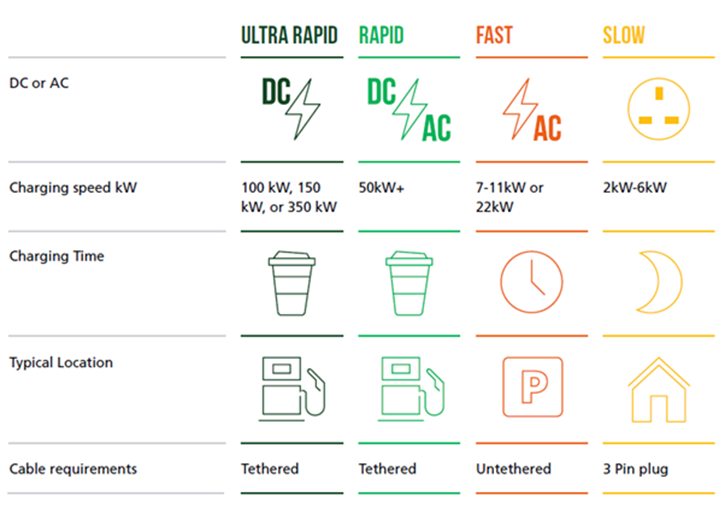
Chargers are available with different kW speeds.
ℹ The actual time for a full charge depends on the kW output (higher is faster), the battery size, and also the kW that the vehicle can take. Looking for further advice? Talk to one of our fleet consultants > Request a callback
Browsing the available EV Charger Options
There are many different charging solutions available, from wall-mounted to pods, standard to rapid, and options in-between. Some of the popular commercial options that come with bespoke user-management systems include:
Easee
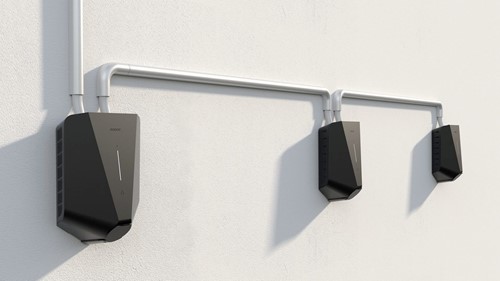
Charging Speed: Up to 22kW
Installation: Wall-mounted
Easee excels in both form and function, with a charging speed of up to 22kW and the option to connect up to 101 charge points on one circuit.
EO
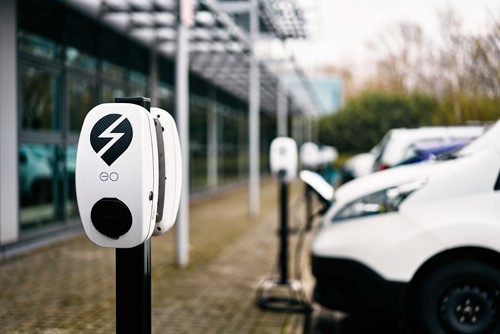
Charging Speed: Up to 22kW
Installation: Post or wall-mount (Mini is wall-mounted only)
All EO charge points come with access to the EO Cloud, an easy-to-use management system that provides a simple view of usage and who’s accessing the charge point. The EO Genius can be fitted on a post or wall whilst the EO mini is a great space-saving option.
Pod Point
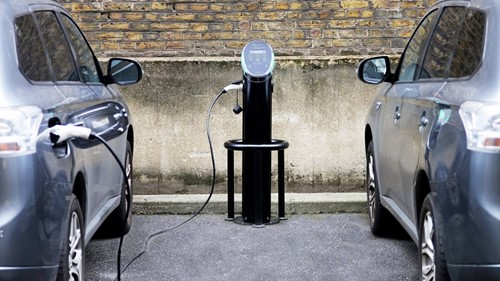
Charging Speed: Up to 22kW
Installation: Freestanding Mount (Pedestal)
The Pod Pont Twin Charger can enable you to charge two vehicles at once. Pod Point chargers can be configured for standard plug and charge access, or alternatively, they can restrict use to RFID access only – making them a versatile option for public or commercial use.
Project EV
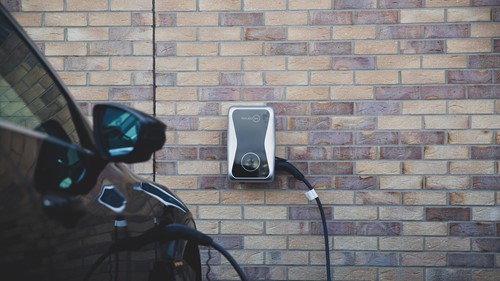
Charging Speed: Up to 40kW
Installation: Wall-mount, dual pedestal or post options available
The Project EV range covers a variety of needs, from compact space-saving offerings to dual pedestals. The 40kW post option provides a speedy charge for any vehicle that can take it.
Future-proofing
There are a few ways you can prepare for potential increases in your charging needs.
- Installing more chargers than is currently needed.
- Laying extra cabling.
- Opting for fast chargers.
ℹ For many businesses, rapid (50kW +) chargers come at too much cost and not many sites have the power capacity for them, whereas most buildings can use 22kW with its 3-phase power requirements. For more info on EVs and chargers > Download our starter guide
Stages involved
The process typically involves checking suitability, securing any relevant funding, designing a charging solution, installation and after support. When working with EV charging experts, such as ChargedEV, you can benefit from a fully guided approach to finding the best charging solution for your business’s requirements from scoping to implementation.
1. Enquiry
No matter what stage you are in researching charging solutions, you can get the support you need. From checking your EV suitability to discussing possible options and answering any of your EV questions.
2. Consultation
This stage often entails applying for any relevant grants, working out how many charge points are required and the most optimal choice, and helping you form a clear fleet EV charging policy – that will consider choices such as budget, location, aesthetics, who will have access, and the optimum method for meeting your charging requirements.
3. Site survey
The next step is working out the feasibility of installing your charging infrastructure. This usually means locating your fuse board to see where cables will run from and finding your max incoming power supply.
4. Groundworks, installation and commissioning
This is when work will begin on installation. Sourcing the chargers and laying cables will happen at this stage. Depending on the charger you’ve opted for and their intended location, groundwork may also be required.
5. Aftercare and support
After the chargers are set up, you can get assistance in maintaining them and creating a rollout strategy for your fleet.
Next Steps
How can Northgate help
We can provide turnkey solutions for businesses who want to make the switch to EVs, from the provision of EVs to installing charging infrastructure and providing ongoing support.
If you are looking to install charging infrastructure for your fleet or staff, both on-site and at home, we can assist you in every aspect of electrifying your fleet.
EV infrastructure solutions can be made bespoke to your requirements – we work with you to help you find the perfect solution – with all things considered.
About ChargedEV

ChargedEV are the delivery partner of choice for fleet managers, salary sacrifice and company car providers and lease companies. Through ChargedEV, Northgate provide EV charging solutions for both homes and the workplace. We offer the industry’s leading line-up for chargers, giving businesses the best fit for their requirements, be it budget, functionality, aesthetics and more.
Take the next step toward EVs with Northgate today
SPEAK TO THE EV TEAM